Your cart is currently empty!
Tag: Threats
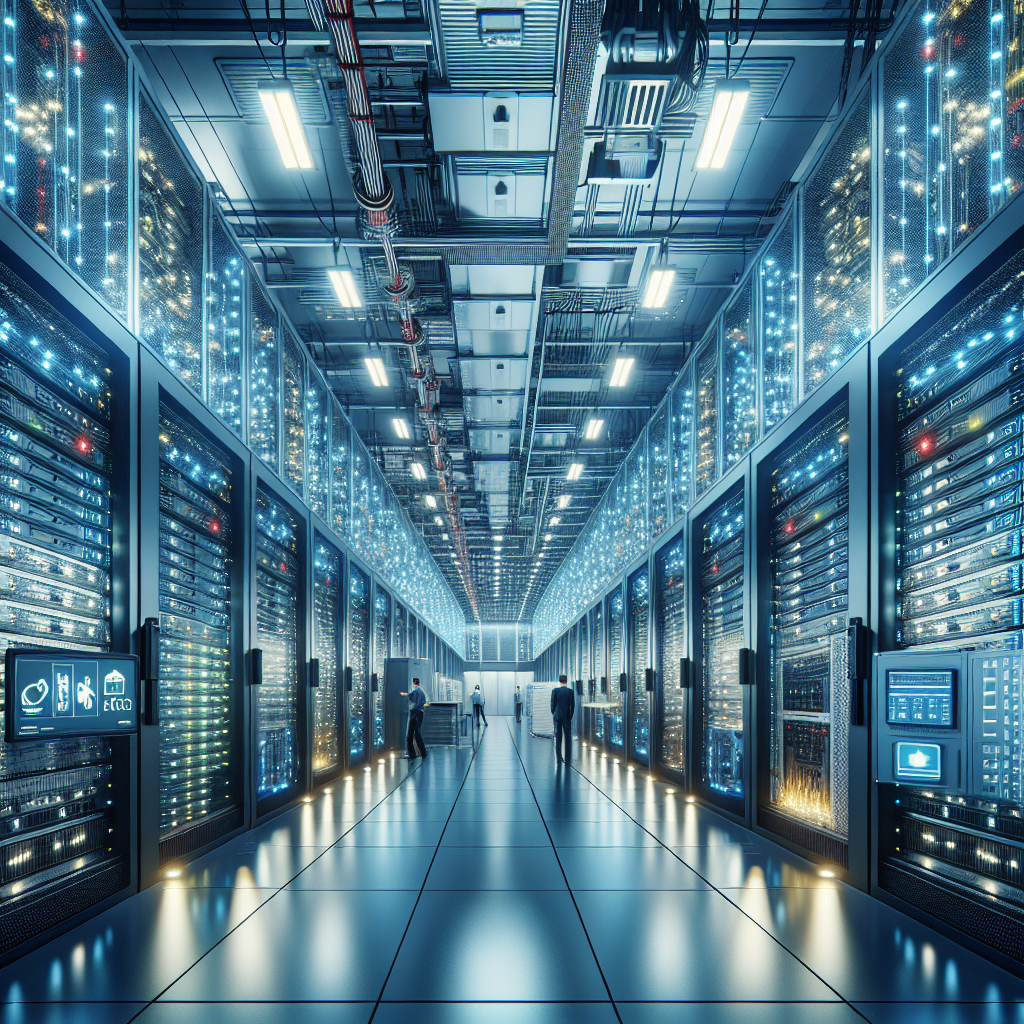
Data Center Security: Safeguarding Against Physical Threats and Hazards
Data centers play a crucial role in today’s digital age, serving as the backbone of organizations’ IT infrastructure. They house critical data and applications that are vital for the smooth operation of businesses. As such, ensuring the security of data centers is paramount to protect against physical threats and hazards.Physical threats to data centers can come in various forms, including natural disasters such as fires, floods, earthquakes, and storms. These events can cause significant damage to the infrastructure and result in data loss or downtime. To safeguard against these threats, data centers need to have robust security measures in place.
One of the key aspects of data center security is access control. Limiting access to authorized personnel only helps prevent unauthorized individuals from entering the facility and tampering with sensitive equipment. This can be achieved through the use of access cards, biometric scanners, and surveillance cameras to monitor and track anyone entering or exiting the data center.
In addition to access control, data centers should also have physical barriers in place to protect against intruders. This can include perimeter fencing, security guards, and alarm systems to deter unauthorized access. Surveillance cameras and motion sensors can also be used to monitor the premises and alert security personnel of any suspicious activity.
Another important aspect of data center security is fire detection and suppression systems. Data centers house a large amount of electrical equipment, which can pose a fire risk. Installing fire detection systems, such as smoke detectors and heat sensors, can help identify potential fire hazards early on. Fire suppression systems, such as sprinklers and fire extinguishers, can then be activated to quickly contain and extinguish any flames.
Data centers should also have contingency plans in place to deal with emergencies and disasters. This can include backup power generators to ensure continuous operation in the event of a power outage, as well as off-site data backups to protect against data loss. Regular testing of these contingency plans is essential to ensure they are effective in real-life scenarios.
In conclusion, data center security is a critical aspect of safeguarding against physical threats and hazards. By implementing robust security measures, such as access control, physical barriers, fire detection, and contingency plans, data centers can protect their infrastructure and ensure the integrity of their data. Investing in data center security is essential for organizations looking to mitigate risks and maintain the reliability of their IT operations.
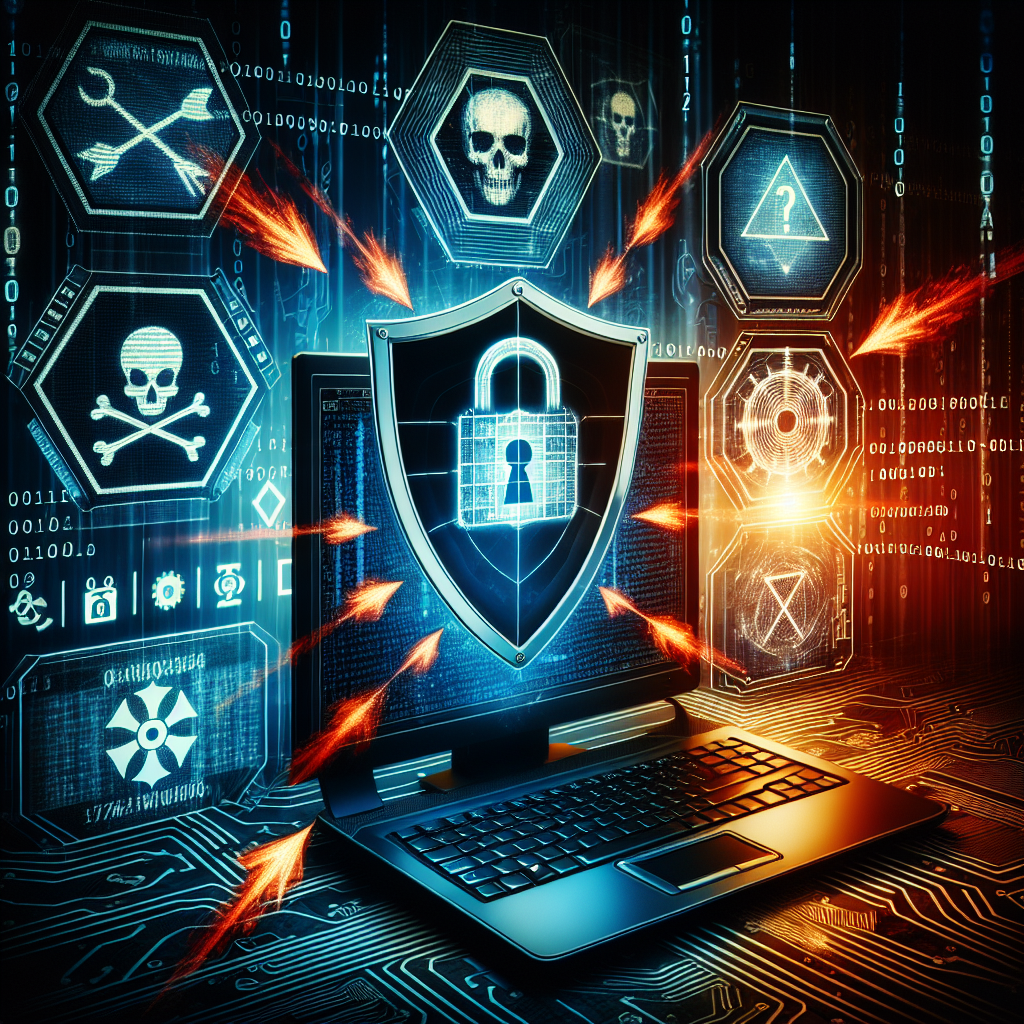
Top Cybersecurity Threats and How to Protect Yourself
In today’s digital age, cybersecurity threats are becoming more prevalent and sophisticated. With the increase in online activity, it is crucial to be aware of the top cybersecurity threats and how to protect yourself from falling victim to them.1. Phishing Attacks
Phishing attacks are one of the most common cybersecurity threats and involve cybercriminals posing as legitimate entities to steal sensitive information such as login credentials, credit card numbers, and personal data. These attacks often come in the form of emails or messages that appear to be from trusted sources. To protect yourself from phishing attacks, be cautious of any unsolicited emails or messages that ask for personal information. Verify the sender’s identity and never click on suspicious links or download attachments from unknown sources.
2. Ransomware
Ransomware is a type of malware that encrypts a victim’s files and demands payment in exchange for the decryption key. This type of cybersecurity threat can cause significant financial and reputational damage to individuals and businesses. To protect yourself from ransomware attacks, regularly back up your data, keep your software up to date, and be cautious when opening email attachments or clicking on links.
3. Malware
Malware, short for malicious software, is a broad category of cybersecurity threats that includes viruses, worms, Trojans, and spyware. Malware can infect your device and steal sensitive information, disrupt operations, or cause damage to your system. To protect yourself from malware attacks, install reputable antivirus software, keep your system updated, and avoid downloading software or files from unreliable sources.
4. Social Engineering
Social engineering is a tactic used by cybercriminals to manipulate individuals into divulging confidential information or performing actions that compromise security. This can include impersonating a trusted contact, using psychological manipulation, or exploiting human emotions to gain access to sensitive data. To protect yourself from social engineering attacks, be cautious of unsolicited requests for information, verify the identity of individuals requesting sensitive data, and educate yourself on common social engineering tactics.
5. DDoS Attacks
Distributed Denial of Service (DDoS) attacks involve overwhelming a website or online service with a high volume of traffic, causing it to become inaccessible to legitimate users. DDoS attacks can disrupt business operations, lead to financial losses, and damage a company’s reputation. To protect yourself from DDoS attacks, implement robust security measures such as firewalls, intrusion detection systems, and content delivery networks.
In conclusion, cybersecurity threats are a growing concern in today’s digital landscape. By understanding the top cybersecurity threats and implementing proactive security measures, you can protect yourself from falling victim to cybercriminals. Stay vigilant, keep your software updated, and educate yourself on best practices for online security to safeguard your personal information and digital assets.
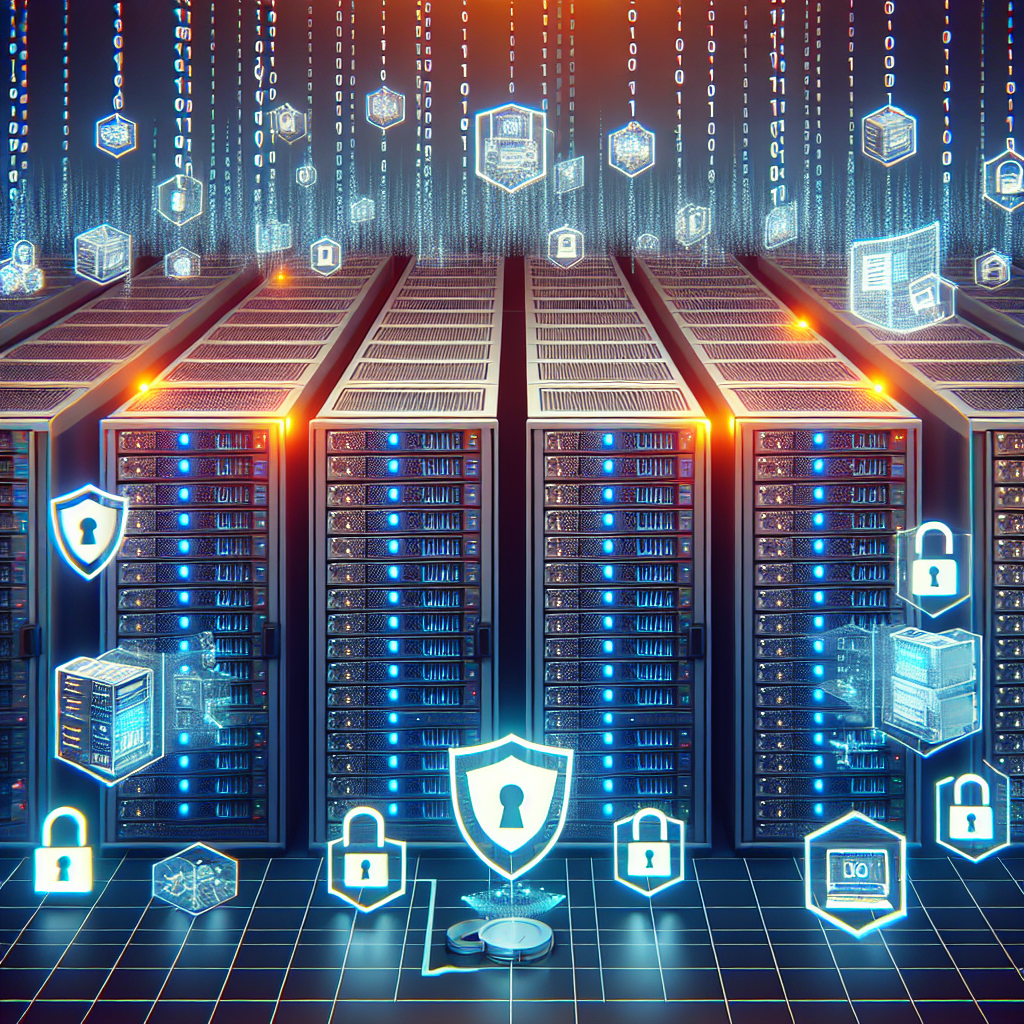
Disaster Recovery Planning: Protecting Your Data Center from Cyber Threats and Security Breaches
In today’s digital age, data centers play a crucial role in storing and managing vast amounts of information for businesses and organizations. However, with the rise of cyber threats and security breaches, it has become more important than ever to have a solid disaster recovery plan in place to protect your data center.Disaster recovery planning is the process of creating a strategy to ensure the continuity of operations and the protection of data in the event of a disaster, whether it be a natural disaster, a cyber attack, or a security breach. By having a comprehensive disaster recovery plan in place, you can minimize downtime, mitigate the impact of a disaster, and ensure the integrity and security of your data center.
One of the biggest threats facing data centers today is cyber attacks. Hackers are constantly looking for ways to infiltrate systems and steal sensitive information, putting businesses at risk of financial loss, reputational damage, and legal liabilities. To protect your data center from cyber threats, it is essential to implement strong security measures, such as firewalls, encryption, and intrusion detection systems. Additionally, regular security audits and penetration testing can help identify vulnerabilities and weaknesses in your system before they are exploited by malicious actors.
In the event of a security breach or cyber attack, having a disaster recovery plan in place can help you quickly recover and restore your data center operations. This plan should include detailed procedures for responding to and mitigating the effects of a security breach, as well as protocols for restoring data and systems to their pre-incident state. By having a clear and well-defined disaster recovery plan, you can minimize the impact of a cyber attack and ensure the continuity of your business operations.
In addition to protecting your data center from cyber threats, disaster recovery planning also involves preparing for other types of disasters, such as natural disasters or equipment failures. By implementing redundancy and backup systems, you can ensure that your data center remains operational even in the event of a power outage, hardware failure, or other unforeseen events. Regular testing and updating of your disaster recovery plan is also essential to ensure that it remains effective and up-to-date in the face of evolving threats and technologies.
In conclusion, disaster recovery planning is a critical component of protecting your data center from cyber threats and security breaches. By implementing strong security measures, creating a comprehensive disaster recovery plan, and regularly testing and updating your procedures, you can ensure the continuity of your operations and the security of your data center in the face of potential disasters. Don’t wait until it’s too late – start planning for disaster recovery today to safeguard your data center against cyber threats and security breaches.
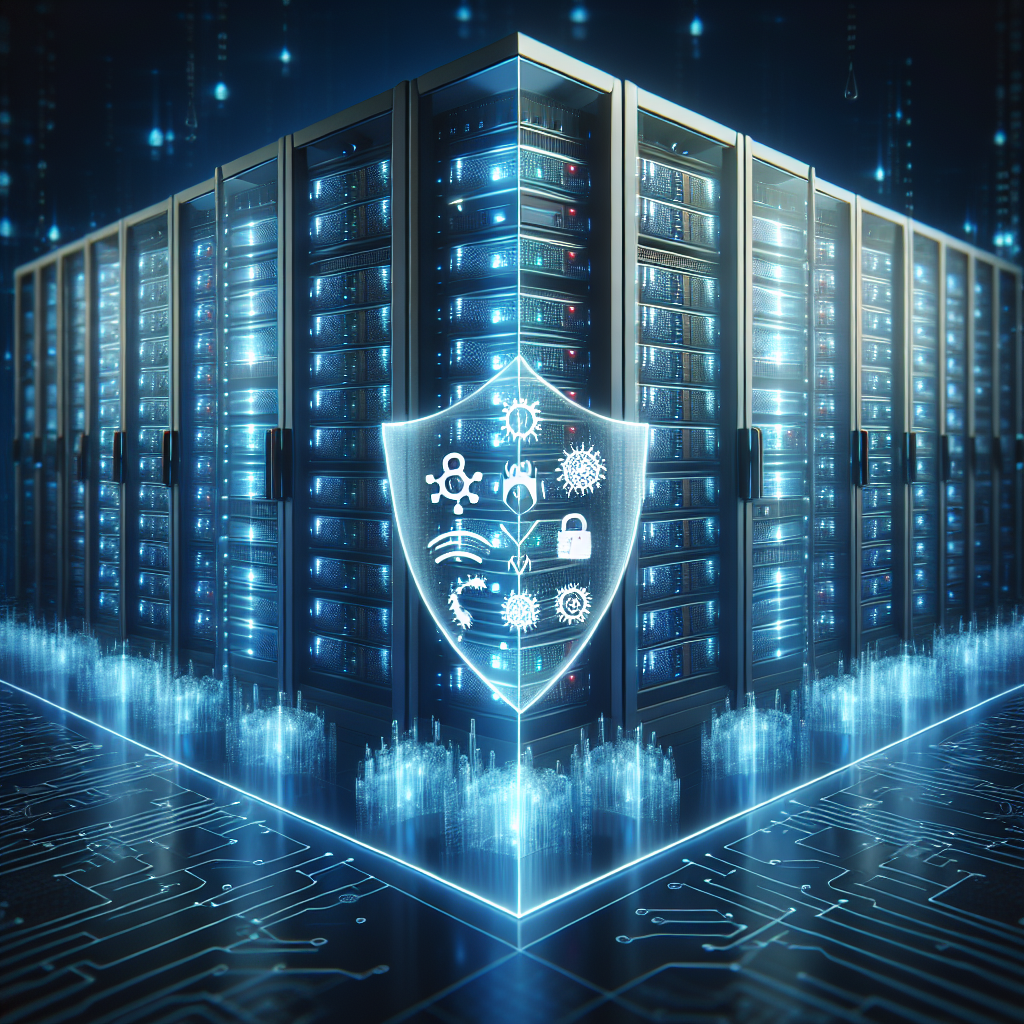
Top Data Center Security Systems to Safeguard Against Cyber Threats
In today’s digital age, data centers are crucial for storing and managing vast amounts of information for businesses and organizations. With the increasing number of cyber threats and attacks, it is essential to have robust security systems in place to safeguard sensitive data and prevent unauthorized access.Here are some of the top data center security systems that can help protect against cyber threats:
1. Firewalls: Firewalls are the first line of defense in a data center security system. They monitor and control incoming and outgoing network traffic based on predetermined security rules. Firewalls can block malicious traffic and prevent unauthorized access to the network.
2. Intrusion Detection Systems (IDS): IDS monitor network traffic for suspicious activity or behavior that may indicate a cyber attack. They can detect and alert IT staff to potential security breaches in real-time, allowing for immediate action to be taken to mitigate the threat.
3. Intrusion Prevention Systems (IPS): IPS go a step further than IDS by actively blocking malicious traffic and preventing potential security breaches. They can automatically respond to detected threats by blocking access to the network or isolating affected systems to prevent further damage.
4. Access Control: Access control systems regulate who has access to the data center and what level of access they have. This includes physical access controls such as biometric scanners, key cards, and security guards, as well as logical access controls like passwords, encryption, and multi-factor authentication.
5. Data Encryption: Data encryption is essential for protecting sensitive information stored in the data center. Encryption converts data into a secure format that can only be read with the correct decryption key, ensuring that even if data is stolen, it remains unreadable to unauthorized users.
6. Security Monitoring: Security monitoring systems continuously monitor network traffic, server activity, and user behavior to detect and respond to potential security threats. These systems can generate alerts, log events, and provide valuable insights into security incidents to help IT staff quickly identify and mitigate risks.
7. Backup and Disaster Recovery: Backup and disaster recovery systems are essential for ensuring data availability and business continuity in the event of a cyber attack or data breach. Regularly backing up data and having a comprehensive disaster recovery plan can help minimize downtime and data loss in the event of a security incident.
By implementing a combination of these top data center security systems, businesses and organizations can strengthen their defenses against cyber threats and protect their valuable data from unauthorized access and malicious attacks. Investing in robust security measures is essential for safeguarding sensitive information and maintaining the trust of customers and stakeholders in today’s increasingly digital world.
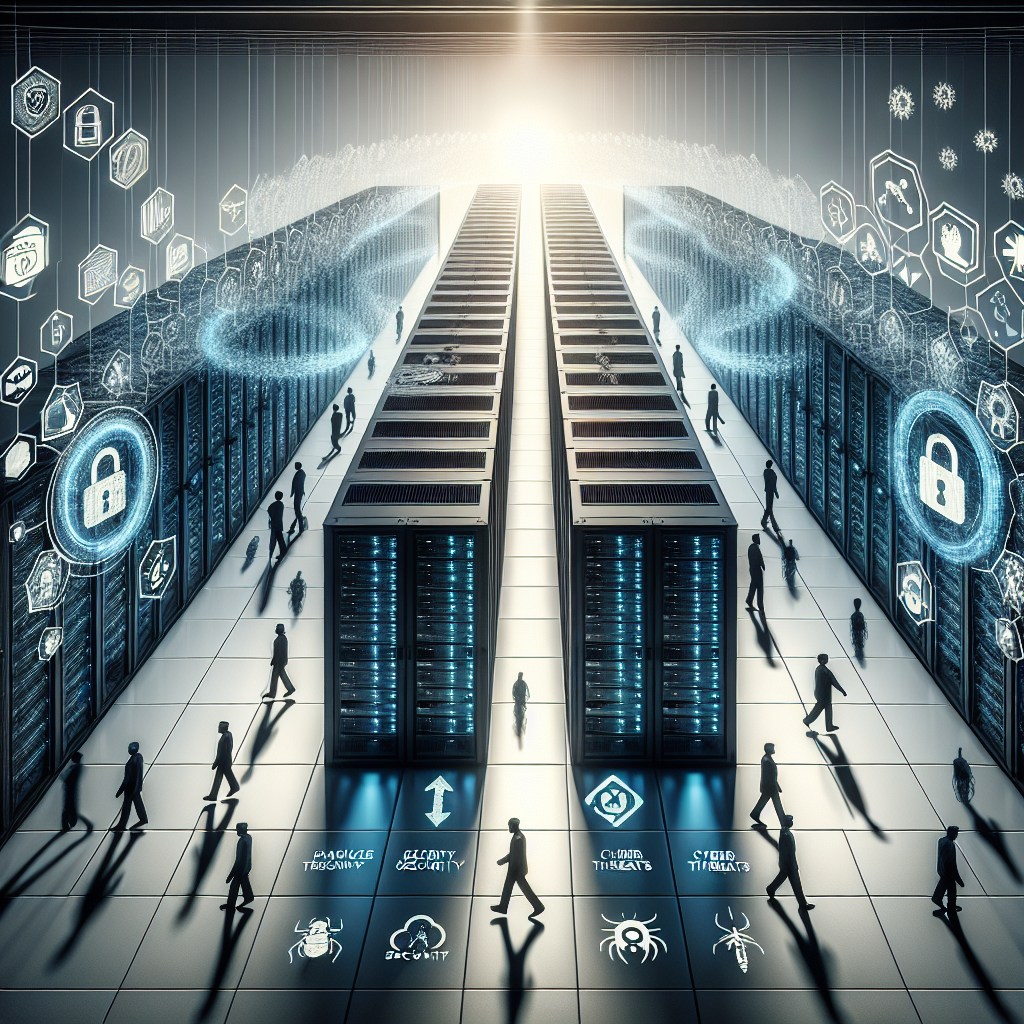
The Evolution of Data Center Security: From Physical to Cyber Threats
Data centers have evolved significantly over the years, from being primarily focused on physical security to now having to address a wide range of cyber threats. As technology has advanced, the way in which data is stored and managed has also changed, resulting in a need for more robust and sophisticated security measures.In the past, data centers were primarily secured through physical means, such as security guards, access control systems, and surveillance cameras. While these measures are still important, they are no longer sufficient to protect against the growing number of cyber threats facing data centers today.
Cyber threats, such as malware, ransomware, and data breaches, have become increasingly common and can have devastating consequences for businesses. As a result, data center security has had to evolve to address these new challenges.
One of the key developments in data center security has been the implementation of advanced cybersecurity measures, such as firewalls, intrusion detection systems, and encryption technologies. These tools help to protect data from unauthorized access and ensure that it remains secure and confidential.
Another important aspect of data center security is the use of monitoring and analytics tools to detect and respond to potential threats in real-time. By continuously monitoring network traffic and system logs, data center operators can quickly identify and address any security issues before they escalate.
In addition to technological advancements, data center security also relies on strong policies and procedures to ensure that data is handled and stored securely. This includes regular security audits, employee training, and incident response plans to mitigate the impact of a security breach.
Overall, the evolution of data center security from physical to cyber threats reflects the changing nature of the digital landscape. As technology continues to advance, data center operators must remain vigilant and proactive in their efforts to protect sensitive data and ensure the integrity of their systems. By implementing a comprehensive security strategy that addresses both physical and cyber threats, data centers can better safeguard their valuable assets and maintain the trust of their customers.

Data Center Security Maintenance: Best Practices for Protecting Your Facility from Cyber Threats
Data centers are the backbone of today’s digital economy, housing and processing vast amounts of data for businesses and organizations around the world. With cyber threats on the rise, it’s more important than ever to ensure the security of these facilities. Here are some best practices for maintaining data center security and protecting your facility from cyber threats.1. Implement a multi-layered security approach: A strong security posture for a data center involves multiple layers of defense, including physical security measures such as access control systems, surveillance cameras, and security guards, as well as cybersecurity measures like firewalls, intrusion detection systems, and antivirus software. By implementing a multi-layered security approach, you can better protect your facility from a variety of cyber threats.
2. Conduct regular security audits and assessments: Regular security audits and assessments are essential for identifying vulnerabilities and weaknesses in your data center security infrastructure. By conducting these audits on a regular basis, you can proactively address any security gaps and ensure that your facility is protected from cyber threats.
3. Keep software and hardware up to date: Outdated software and hardware can be a major security risk for data centers, as cybercriminals often exploit vulnerabilities in older systems to gain access to sensitive data. To mitigate this risk, it’s important to keep all software and hardware up to date with the latest security patches and updates.
4. Train employees on cybersecurity best practices: Employees are often the weakest link in data center security, as human error can lead to security breaches and data leaks. To prevent this, it’s important to train employees on cybersecurity best practices, such as how to recognize phishing emails, how to create strong passwords, and how to securely store and transmit data.
5. Monitor and analyze network traffic: Monitoring and analyzing network traffic is essential for detecting and responding to potential security threats in real-time. By using tools like intrusion detection systems and security information and event management (SIEM) software, you can identify suspicious activity and take action to mitigate the threat before it causes harm to your data center.
6. Have a disaster recovery plan in place: In the event of a security breach or cyber attack, having a disaster recovery plan in place is essential for minimizing downtime and data loss. By regularly testing and updating your disaster recovery plan, you can ensure that your data center is prepared to quickly recover from a security incident and resume normal operations.
In conclusion, maintaining data center security is essential for protecting your facility from cyber threats. By implementing a multi-layered security approach, conducting regular security audits, keeping software and hardware up to date, training employees on cybersecurity best practices, monitoring network traffic, and having a disaster recovery plan in place, you can better protect your data center from potential security breaches and cyber attacks.
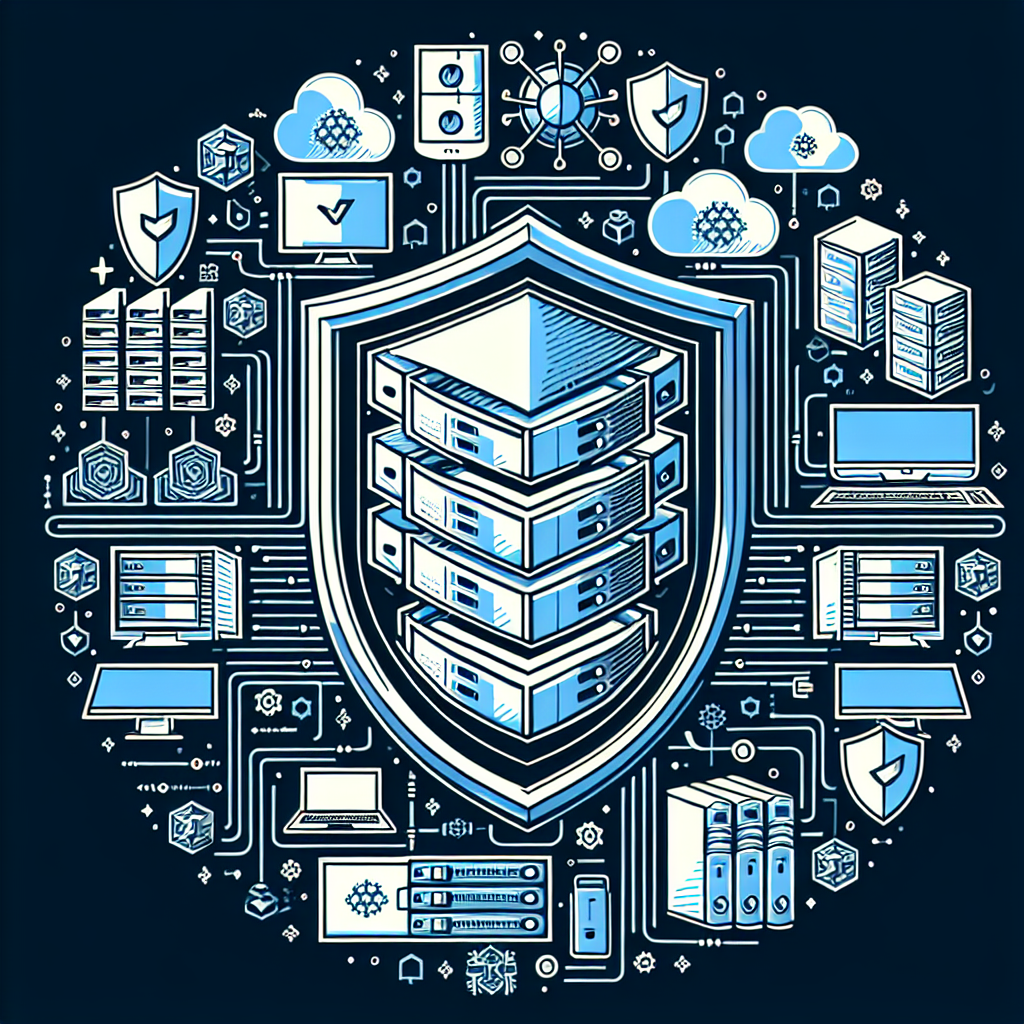
Protecting Your Data Center from Cyber Threats: The Role of Security Systems
Data centers play a crucial role in storing and managing vast amounts of information for businesses, government agencies, and other organizations. With the increasing reliance on digital data, protecting data centers from cyber threats has become a top priority for organizations around the world. One of the key components in safeguarding data centers from cyber threats is the implementation of robust security systems.Security systems in data centers are designed to detect, prevent, and respond to various types of cyber threats, including malware, ransomware, phishing attacks, and insider threats. These systems are comprised of a combination of hardware, software, and processes that work together to secure the data center’s infrastructure and data assets.
One of the most important components of a data center security system is a firewall. Firewalls act as a barrier between the internal network and external threats, filtering incoming and outgoing network traffic to prevent unauthorized access and protect sensitive data. Firewalls can be implemented at various points within the data center network, including at the perimeter, between network segments, and on individual servers.
In addition to firewalls, data centers also employ intrusion detection and prevention systems (IDPS) to monitor network traffic for suspicious activity and respond to potential threats in real-time. IDPS use a combination of signature-based and anomaly-based detection techniques to identify and mitigate cyber threats before they can cause harm to the data center infrastructure.
Data encryption is another critical security measure that data centers use to protect sensitive information from unauthorized access. Encryption involves encoding data in such a way that only authorized users with the correct decryption key can access it. By encrypting data both at rest and in transit, data centers can ensure that even if a cyber attacker gains access to the data, they will not be able to read or use it.
Access control systems are also essential for securing data centers from cyber threats. These systems manage and restrict access to the data center facilities, server rooms, and individual servers based on user credentials and permissions. By implementing strict access controls, data centers can prevent unauthorized individuals from physically or remotely accessing the data center infrastructure.
In conclusion, protecting data centers from cyber threats requires a multi-layered approach that includes the implementation of robust security systems. Firewalls, intrusion detection and prevention systems, data encryption, and access control systems are just a few of the key components that data centers use to safeguard their infrastructure and data assets. By investing in comprehensive security systems and staying vigilant against evolving cyber threats, organizations can ensure the integrity and availability of their data center operations.

Data Center Risk Assessment: Strategies for Assessing and Mitigating Cybersecurity Threats
In today’s digital age, data centers are the backbone of any organization’s IT infrastructure. These facilities house critical business data and applications, making them prime targets for cyber attacks. As a result, it is essential for organizations to conduct regular risk assessments to identify and mitigate potential cybersecurity threats.Data center risk assessments involve evaluating the security posture of the facility, including physical security measures, network security controls, and data protection protocols. By conducting these assessments, organizations can identify vulnerabilities and weaknesses in their data center environment, and take proactive measures to address them before they are exploited by cyber attackers.
One key strategy for assessing and mitigating cybersecurity threats in data centers is to conduct regular vulnerability assessments. These assessments involve scanning the data center environment for known vulnerabilities in hardware, software, and network configurations. By identifying and addressing these vulnerabilities, organizations can reduce the likelihood of a successful cyber attack.
Another important strategy for mitigating cybersecurity threats in data centers is to implement robust access controls. This involves restricting access to data center facilities and systems to authorized personnel only. By implementing strong authentication mechanisms, such as multi-factor authentication and biometric controls, organizations can prevent unauthorized access to sensitive data and applications.
Furthermore, organizations should also implement data encryption techniques to protect data at rest and in transit. By encrypting data, organizations can ensure that even if a cyber attacker gains unauthorized access to the data center environment, they will not be able to read or use the data without the encryption keys.
In addition to these technical measures, organizations should also educate employees about cybersecurity best practices and the importance of following security policies and procedures. By raising awareness about cybersecurity threats and providing training on how to detect and respond to potential threats, organizations can empower their employees to be the first line of defense against cyber attacks.
Overall, conducting regular risk assessments and implementing robust cybersecurity measures are essential for protecting data centers from cyber threats. By taking proactive steps to assess and mitigate cybersecurity risks, organizations can safeguard their critical business data and applications, and ensure the continuity of their operations in the face of increasing cyber threats.
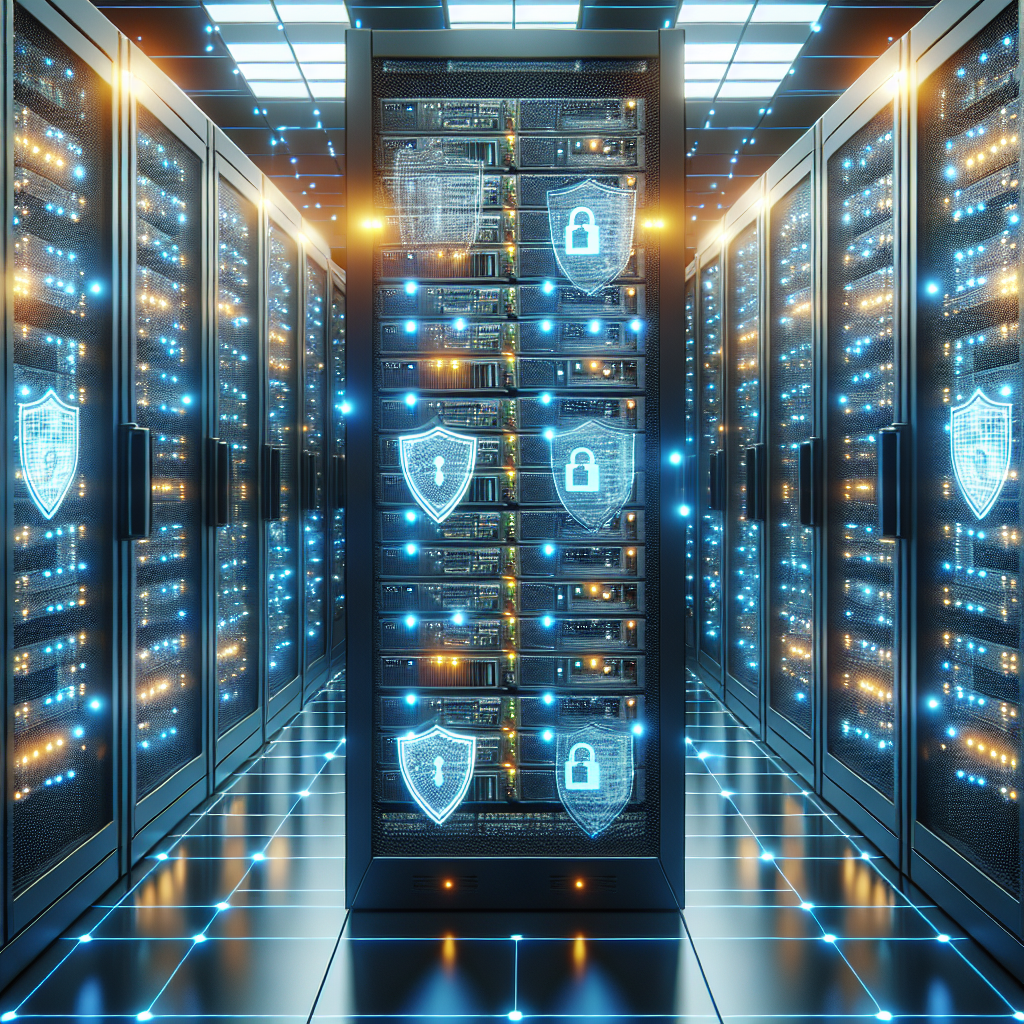
Security Considerations for Data Center Servers: Protecting Your Data Against Cyber Threats
Data centers play a crucial role in storing, processing, and managing vast amounts of data for organizations. With the increasing reliance on digital technologies and the rise of cyber threats, ensuring the security of data center servers has become more important than ever. Protecting sensitive data against cyber threats is essential to prevent data breaches, unauthorized access, and other security risks that can have serious consequences for businesses.One of the key security considerations for data center servers is implementing robust access controls. Limiting access to authorized personnel and implementing strong authentication mechanisms, such as multi-factor authentication, can help prevent unauthorized access to sensitive data. Additionally, implementing role-based access controls can ensure that users only have access to the data and resources they need to perform their job responsibilities.
Another important security consideration is securing the physical infrastructure of data center servers. This includes implementing physical security measures such as access controls, surveillance cameras, and environmental controls to protect servers from theft, vandalism, and environmental hazards. Additionally, data center servers should be located in secure facilities with controlled access to prevent unauthorized physical access.
In addition to physical security measures, organizations should also implement network security controls to protect data center servers from cyber threats. This includes implementing firewalls, intrusion detection and prevention systems, and encryption to protect data in transit and at rest. Regular monitoring and auditing of network traffic can help detect and respond to potential security incidents in a timely manner.
Regular software updates and patch management are also essential for securing data center servers. Keeping servers and software up to date with the latest security patches can help prevent vulnerabilities from being exploited by cyber attackers. Organizations should also conduct regular security assessments and penetration testing to identify and address any security weaknesses in their data center servers.
Data center servers should also be backed up regularly to ensure that data can be recovered in the event of a security incident or data loss. Implementing data backup and disaster recovery plans can help minimize the impact of cyber threats and ensure business continuity in the event of a security breach.
In conclusion, protecting data center servers against cyber threats is essential for safeguarding sensitive data and maintaining the trust of customers and stakeholders. By implementing robust access controls, securing the physical infrastructure, implementing network security controls, and regularly updating software and conducting security assessments, organizations can enhance the security of their data center servers and protect their data against cyber threats.
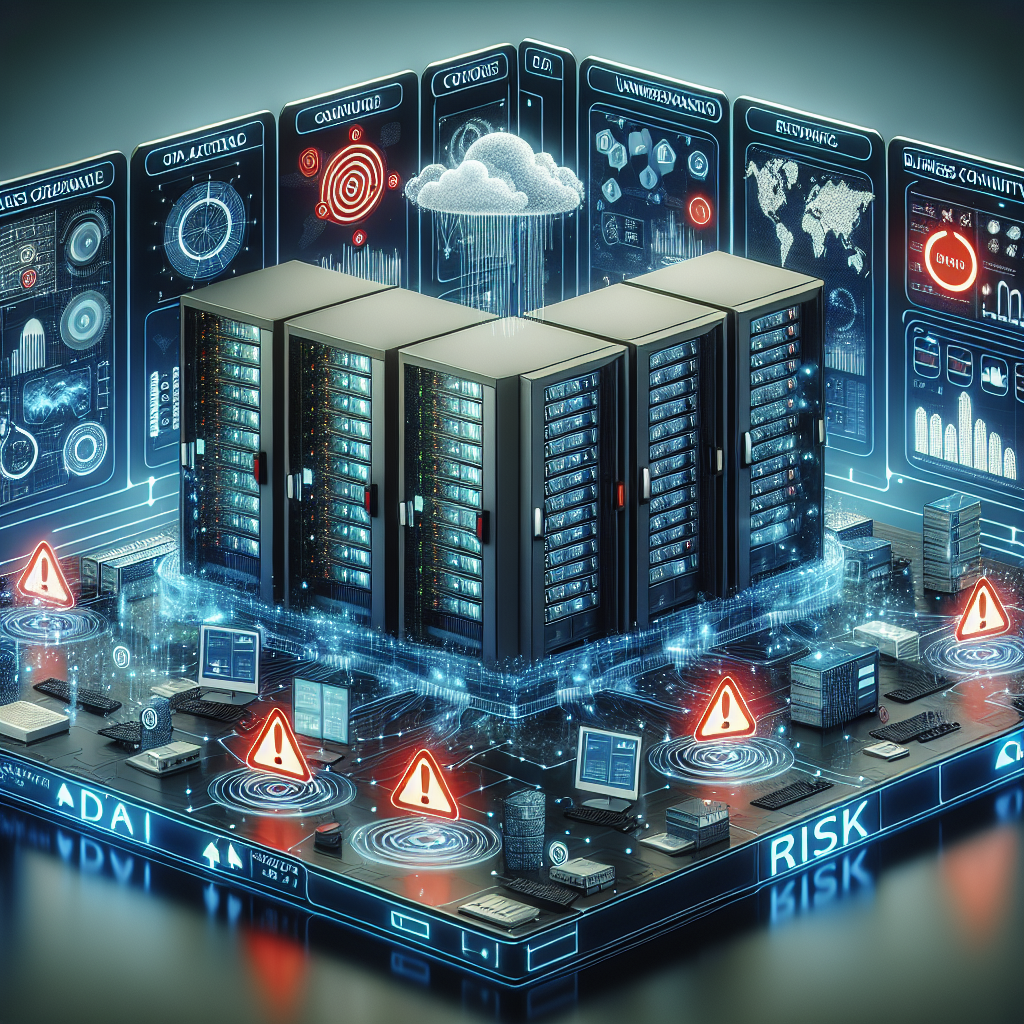
The Importance of Data Center Risk Assessment: Mitigating Threats and Ensuring Business Continuity
In today’s digital age, data centers play a crucial role in the operations of businesses of all sizes. These facilities house the servers, storage, and networking equipment that enable organizations to store, process, and access their data. With the increasing reliance on data-driven decision-making and the growing threat of cyberattacks, it is more important than ever for businesses to prioritize data center risk assessment.A data center risk assessment is a comprehensive evaluation of the potential threats and vulnerabilities that could impact the security and availability of a data center. By conducting a risk assessment, organizations can identify and prioritize potential risks, develop mitigation strategies, and ensure business continuity in the event of a disaster.
One of the key benefits of a data center risk assessment is the ability to identify and prioritize potential threats. This includes both physical threats, such as natural disasters or equipment failure, and cyber threats, such as hacking or malware attacks. By understanding the specific risks facing their data center, organizations can develop targeted mitigation strategies to address these vulnerabilities and minimize the likelihood of a security breach or downtime.
In addition to identifying potential threats, a data center risk assessment also helps organizations understand the potential impact of these threats on their operations. By assessing the potential financial, operational, and reputational consequences of a data center breach or outage, businesses can prioritize their risk mitigation efforts and allocate resources accordingly.
Furthermore, a data center risk assessment is essential for ensuring business continuity. By identifying and addressing potential vulnerabilities in advance, organizations can develop robust disaster recovery and business continuity plans to minimize downtime and ensure that critical data and applications remain accessible in the event of a disaster.
Overall, the importance of data center risk assessment cannot be overstated. By proactively identifying and addressing potential threats, organizations can minimize the risk of security breaches, downtime, and data loss, and ensure the continuity of their business operations. In today’s rapidly evolving digital landscape, a comprehensive risk assessment is essential for protecting the integrity and availability of critical data and applications.
